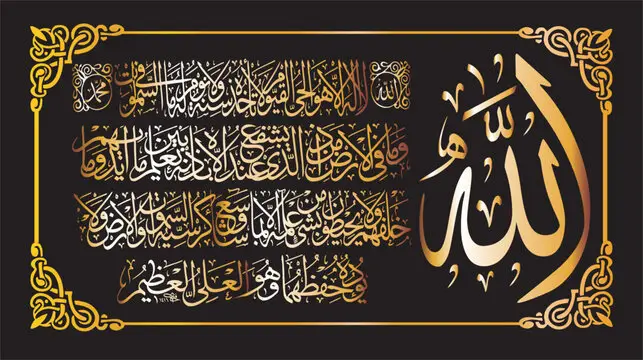Stopping Signs in the Quran (Waqf Marks) – Complete Guide for Muslims
Reciting the Holy Quran is not only about reading its words — it is about understanding, pausing, and reflecting upon the meanings that Allah ﷻ has revealed. Every Muslim knows that even a slight pause or continuation at the wrong place can change the message completely. That is why stop signs — known as Waqf Marks (رموز الوقف) — were introduced in the Quran.
These signs guide us on where to stop, pause, or continue, ensuring that the message remains clear and respectful. Whether you are a beginner, a student of Tajweed, or an experienced reciter, learning these stop symbols is essential to recite the Quran correctly and beautifully.

What Are Stop Signs in the Quran (Waqf Symbols)?
The term Waqf (وقف) in Arabic literally means “to stop.” In the Quranic context, it refers to where a reader should stop, pause, or continue reciting to preserve the intended meaning of Allah’s words.
Early scholars of Tajweed and Quranic recitation, such as Abu Amr al-Dani (رحمه الله), studied the Quran deeply and developed these stop marks to help Muslims worldwide recite with proper understanding and respect.
Today, most printed Mushafs (copies of the Quran) use standardized Waqf symbols, helping reciters follow the correct rhythm and meaning.
Purpose of Stop Signs in Quran Recitation
The stop signs in the Quran serve three main purposes:
- Preserving the Meaning:
Each verse of the Quran carries deep meaning. Stopping at the wrong place can distort or change that meaning. - Improving Recitation Flow:
Waqf symbols guide the reciter on how to breathe naturally and maintain a smooth flow of recitation. - Enhancing Spiritual Reflection:
Pausing at the right places allows time to ponder the verses, increasing focus, humility, and closeness to Allah ﷻ.
For example, the statement “لا إله إلا الله” must be read completely — stopping after “لا إله” would give an incorrect meaning (“There is no god”), while completing it conveys the truth: “There is no god except Allah.”
Types of Stop Signs in the Quran
Understanding the different types of Waqf marks helps reciters read with precision and confidence. Let’s look at each one in detail.
a. Mandatory Stop (Waqf Lazim – م)
Symbol: م
Meaning: It is compulsory to stop here. If the reader continues, the meaning may change or become unclear.
Example:
“إِنَّ اللَّهَ غَفُورٌ رَّحِيمٌ (م)”
You must stop because continuing could alter the meaning.
b. Prohibited Stop (Waqf Mamnu‘ – لا)
Symbol: لا
Meaning: Do not stop at this point. The sentence or phrase is incomplete, and stopping could cause misunderstanding.
Example:
“اللَّهُ لَا إِلَٰهَ إِلَّا هُوَ (لا) الْحَيُّ الْقَيُّومُ”
Stopping after “هو” would separate “Allah” from His attribute “The Ever-Living,” which changes the intended meaning.
c. Permissible Stop (Waqf Ja’iz – ج)
Symbol: ج
Meaning: You may stop or continue — both are acceptable.
This sign gives flexibility to the reader depending on breath or flow.
d. Preferred Stop (Qif – قلى or قلي)
Symbol: قلى
Meaning: Stopping is preferred, but continuing is still valid. It helps the reciter reflect and maintain the verse’s structure.
e. Preferred Continuation (Sili – صلى or صلي)
Symbol: صلى
Meaning: It is better to continue reciting, but stopping is allowed if needed.
f. Pause Sign (Saktah – س)
Symbol: س
Meaning: This indicates a brief pause without taking a breath, usually lasting for a second or two.
Example: You can find this in Surah Al-Kahf and Surah Al-Qiyamah.
g. Other Rare Signs
- قف – Command to stop.
- ق – Suggests a short stop.
- ص – Symbol for silence or short pause.
- مع – Indicates similarity between two places where the same rule applies.
📖 Note: Different Mushafs (Madani vs. Indo-Pak scripts) may use slightly different symbols, but their meanings remain consistent.
Difference Between Stop Signs and Verse Endings
Many readers confuse the end of a verse (ayah) symbol with a Waqf mark.
However, they are not the same. The end of an ayah only marks the completion of a verse, while the Waqf signs show where you should or should not stop.
For example, in Surah Al-Asr:
“وَالْعَصْرِ إِنَّ الْإِنسَانَ لَفِي خُسْرٍ ”
Even though the verse ends, the meaning continues — so pausing briefly and then continuing is more appropriate.
Examples of Stop Signs and Their Meanings
| Symbol | Arabic Name | Meaning | Rule | Example (Transliteration) |
|---|---|---|---|---|
| م | Waqf Lazim | Must Stop | Stop is mandatory | Inna Allah Ghafurun Raheem (م) |
| لا | Waqf Mamnu‘ | Do Not Stop | Continue recitation | Allahu la ilaha illa huwa (لا) |
| ج | Waqf Ja’iz | Optional Stop | Either stop or continue | Qul huwa Allahu ahad (ج) |
| قلى | Qif | Better to stop | Preferred pause | Wa in kuntum fi raybin mimma nazzalna (قلى) |
| صلى | Sili | Better to continue | Optional stop | Wa ma khalaqadh dhakara wal untha (صلى) |
These examples help visualize how each sign functions and why stopping correctly matters in preserving meaning.
How to Learn and Practice Quran Stop Signs
Learning stop signs can be easy with the right guidance. Here’s how different age groups can approach it:
For Children
- Start with short Surahs like Al-Ikhlas or Al-Falaq.
- Use color-coded Mushafs that highlight Waqf symbols.
- Encourage reading with a qualified Quran teacher who explains the purpose of each sign.
For Adults
- Study Tajweed and Waqf together for deeper understanding.
- Practice 1–2 pages daily focusing on stop rules.
- Join online Quran classes to receive correction and feedback.
For Elders
- Read at a comfortable pace, focusing on clarity over speed.
- Use large-print Mushafs and listen to famous Qaris like Abdul Basit or Mishary Alafasy to understand rhythm and pauses.
- Reflect upon meanings during each pause to increase connection with Allah’s words.
Common Mistakes in Applying Stop Signs
Many reciters unintentionally make errors with stop marks. The most common ones include:
- Ignoring the signs and reading continuously.
- Stopping in the middle of a phrase, breaking the meaning.
- Confusing similar-looking symbols (like قلى vs. صلى).
- Relying only on memory without guidance from a teacher.
To improve, always read under supervision or listen carefully to expert Qaris who apply Tajweed and Waqf properly.
Tips for Mastering Stop Signs in the Quran
- Read slowly and consciously — don’t rush.
- Use Quran apps or digital Mushafs with color-coded Tajweed and Waqf indicators.
- Listen daily to expert recitations and repeat after them.
- Revise the rules regularly and apply them during Salah and personal recitation.
- Seek Allah’s help through du‘a for consistency and understanding.
Why Learning Stop Signs Strengthens Your Iman
Each stop in the Quran is not just a rule — it is an invitation to pause and reflect.
By stopping where Allah wants you to stop, you show adab (respect) to His words. You engage in tadabbur (reflection) and strengthen your iman (faith).
Reading with awareness and humility brings peace to the heart and clarity to the soul.
“And when the Qur’an is recited, listen to it and pay attention so that you may receive mercy.” (Surah Al-A‘raf, 7:204)
Conclusion
Understanding and following the stop signs in the Quran ensures that you recite correctly, reflect deeply, and connect sincerely with Allah’s message. Whether you are a child, an adult, or an elder, learning these symbols is a step toward perfecting your recitation and gaining Allah’s pleasure.
May Allah bless us with the ability to recite His Book with accuracy, humility, and love.
Ameen.
FAQs About Stop Signs in the Quran
1. What are the stop signs in the Quran called?
They are known as Waqf Marks or Waqf Symbols, indicating where to stop or continue while reading.
2. How many stop signs are in the Quran?
There are several, including م, لا, ج, قلى, صلى, and س, among others.
3. What happens if you stop incorrectly?
Stopping at the wrong place can change the meaning, so it’s important to follow Waqf rules properly.
4. Are stop signs the same in every Mushaf?
Yes, generally, though regional scripts (like Madani and Indo-Pak) may have minor symbol variations.
📖 Want to understand the structure of the Quran better?
Read our guides on How Many Surahs Are in the Quran and How Many Ayahs Are in the Quran.







